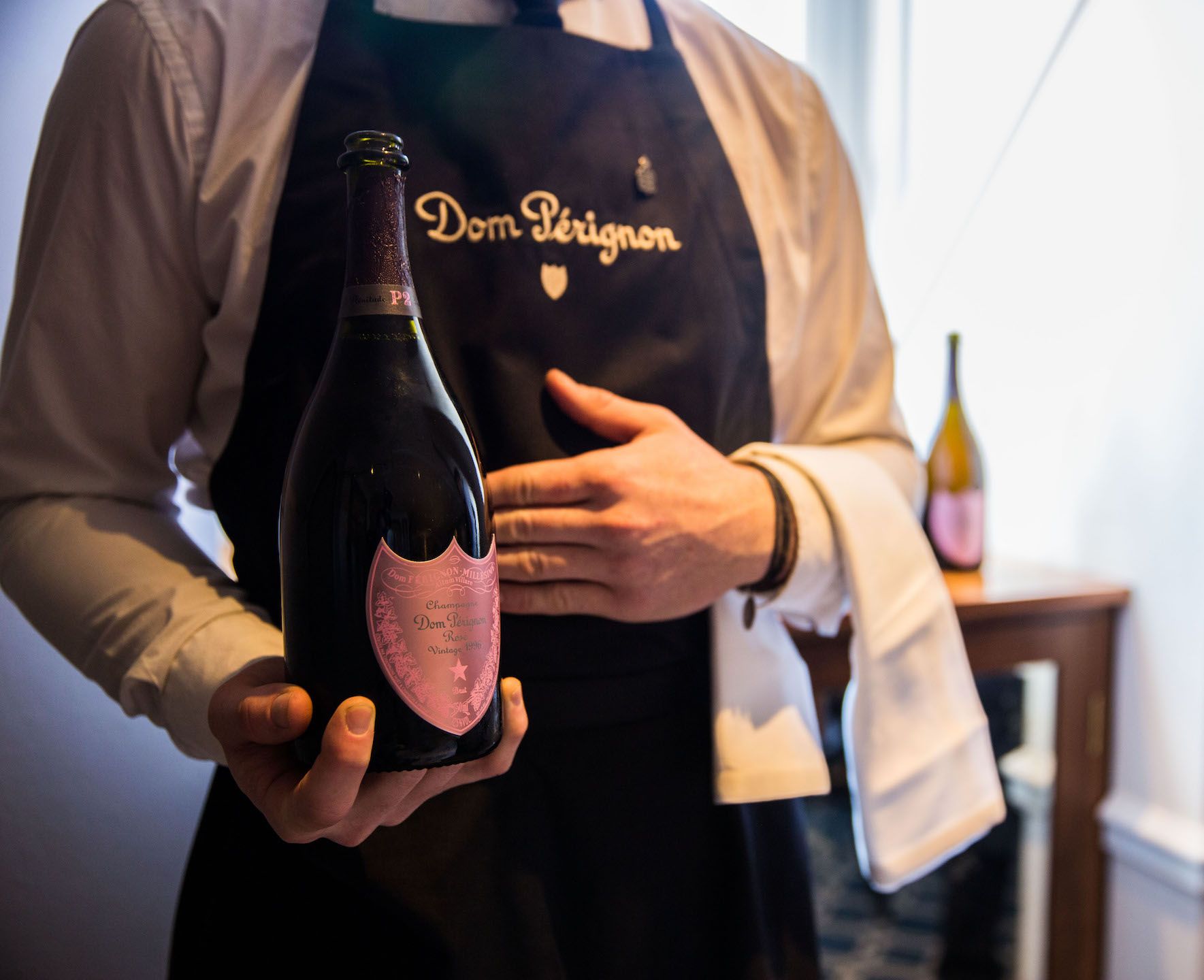Long ageing has given the Dom Pérignon Plénitude Rosé 1996 an elegance and grace that’s balanced and expressive. 1996 wasn’t the perfect year but Geoffroy explains it is the company’s aim to continually push the boundaries and tell the years for what they were. Here’s the lowdown…
What is P2?
P2 refers to the ‘Second Plénitude’, a period in the wine’s extended ageing process. Previously known as ‘Oenothèque’, these wines are released after a minimum 12 years of ageing on the lees – in some cases much longer.
They all spend between three and four years post-disgorgement in the bottle.

“We are very committed to rosé and pushing the boundaries with rosé,” says Richard Geoffroy. “The core value to Dom Pérignon is to be ‘as complete, bracing and harmonious’ as we can be.”
Was 1996 a great year?
It wasn’t the vintage of the century that’s for sure, but it has shown to produce Champagnes of very high quality.
The harvest itself was defined by the winds that blew across the vines drying the berries and concentrating the flavours.
“1996 was not 100 per cent correct,” reflects Geoffroy. “It was picked too early. The flavours were not that ripe – we had been lured by intensity in place of profile of flavour.”
But it was good enough to make a prestige wine such as this?
Of course, or Dom Pérignon wouldn’t have made or released this wine. The long ageing in the cellar has given the wine an elegance and grace that’s balanced and expressive – but more of this later.

Why are vintage Champagnes so important to Dom Pérignon?
“We as winemakers are on a mission to tell these extraordinary years for what they are – it’s what wine lovers are aspiring for,” says Geoffroy. “In my view Dom Pérignon’s greatest asset is its vision. Every vintage gets us closer to that ideal, always pushing the boundaries, shifting the line.”
What’s in the bottle?
The 1996 – as well as the 1995 and 1993 – all have around 20 per cent red wine in the blend. The key red here is Pinot Noir, which Geoffroy describes as ‘the holy grail’ of grape varieties and ‘a fascination to all of us’. He’s quick to romanticise Pinot Noir and speaks of it almost in ethereal terms.
“There is nothing more fickle, more demanding than Pinot Noir; no other grape keeps the winemaker on their toes like Pinot Noir. This element of uncertainty is the magic.”
The vibrancy of the wine is attributed to Pinot Noir, while the ‘tension’ is thanks to the perfect balance of Pinot Noir and Chardonnay.
So what does it taste like?
Let’s start with what it looks like – as you’d expect given its age it’s taken on an orange/rust hue but is amazingly limpid.
The bubbles are there but so, so gentle.
It’s got the nose of a bakehouse oven and a cleanliness that’s filled with ripe red cherry, pear and jasmine. A hint of spice too, and citrus.
In the mouth it’s fresh and elegant with a delicate fizz. Strawberries and cream are joined by a dash of zest, honey and toasted wood… and the finish is long and concentrated. The perfect balance of acid, fruit and tannin, offering a waft of brininess on the finish.

Wow! And how about the 1995 and 1993 wines?
It was very worthwhile tasting these two older vintages alongside the 1996. Not just because we got to taste two more beautifully aged – not to mention very expensive! – Champagnes. The 1995 is bready, more creamy than the ’96. There’s raspberry and fruits of the forest, orange peel and a savoury note of chicory. On the whole it’s fuller, more fruit-driven.
As for the 1993, it’s bold and urgent. More of a fizz to it than the others and a real smash of fruit; red fruit and citrus. It’s somehow less subtle and very powerful; smoked nuts and spice on the nose and palate, and there’s plenty of acidity present making it possibly the most ‘youthful’ of the three.
Anything more to add?
There will be a third Plénitude of the 1996 rosé, we don’t know when but it will be even ‘more profound, more complex’ than the P2.
“There is constant tasting to decide when to disgorge these wines,” says Geoffroy.
The RRPs for the three wines are P2 Rosé 1996 (£820), P2 Rosé 1995 (£595) and P2 Rosé 1993 (£614)










































